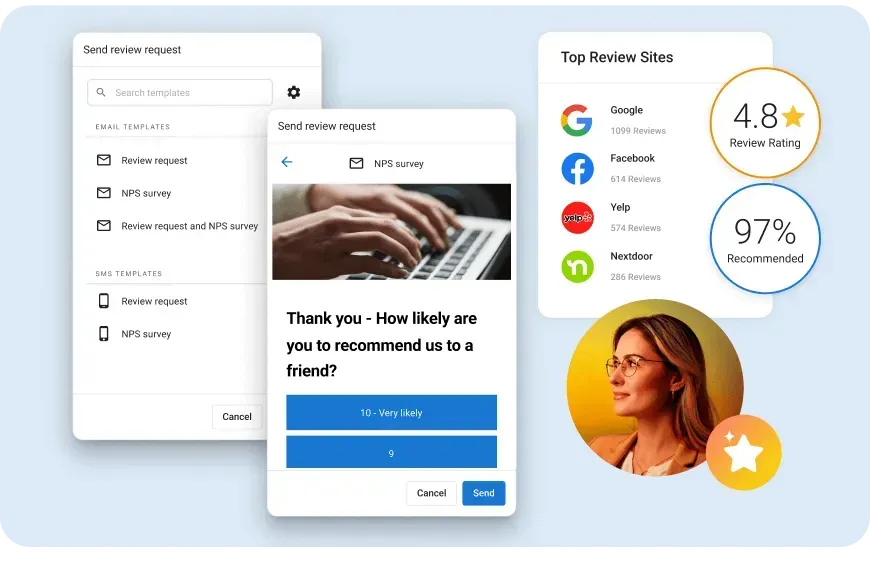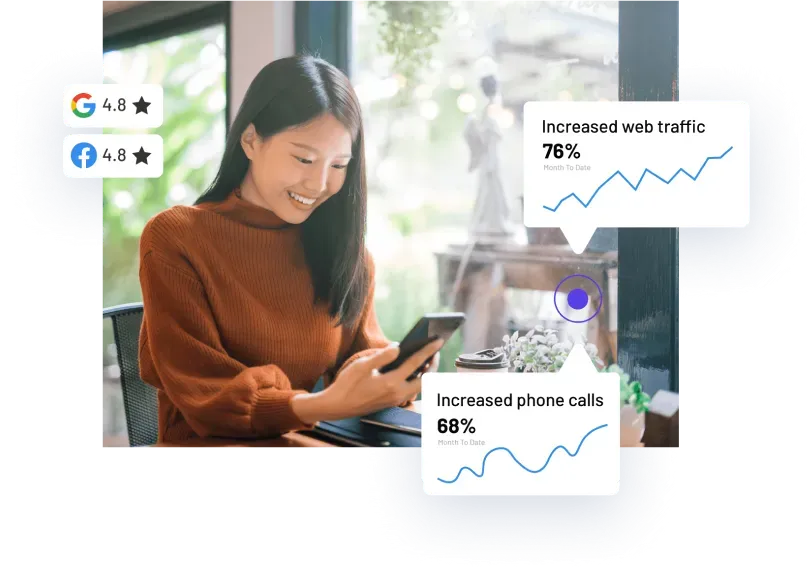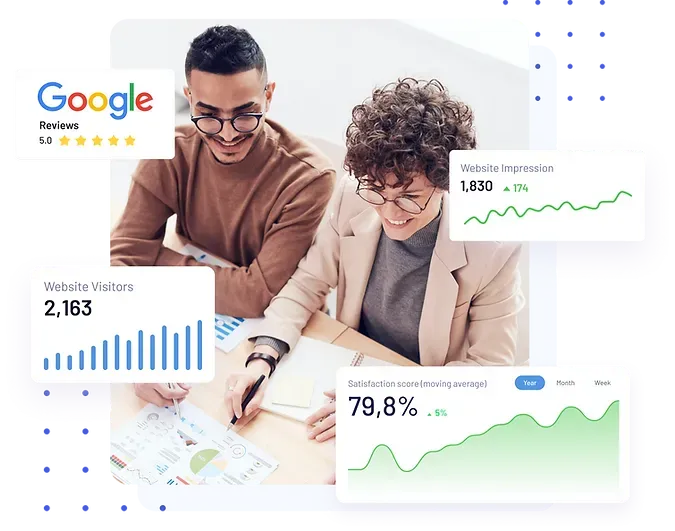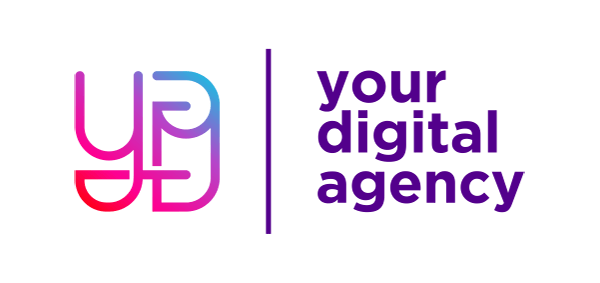CALCULATING CONTENT MARKETING ROI: A DEEP DIVE INTO CONTENT PERFORMANCE
Content marketing is as vital for the small business as it is potentially confusing.

Content marketing is as vital for the small business as it is potentially confusing. With such a wealth of content types to choose from, deciding on a plan of attack can feel like a full-time job and in many cases, it is.
According to data furnished by Content Marketing Institute, 88 percent of organisations engage in some kind of content marketing. That's a pretty compelling call to action, but it also tells us something else: The market is saturated. So the question is which kinds of content are worth your time?
Here is an overview of potential answers to that question by breaking down the major content types and what they have to offer.
Blog Posts
Blog posts have been around pretty much as long as the internet. But don't let that fool you; blog posts are a venerable content marketing technique and still have a lot to offer the emerging business. If your company doesn't have a blog yet, it's time to build one.
Already have a blog? Excellent. Your next goal is deciding what you want your blog to accomplish. Because blog posts occupy the top layer of the content marketing funnel, they're designed first and foremost to drive traffic and build brand awareness. For small businesses that occupy either a very specific niche or an overcrowded market, blogs are particularly important. You're up against an array of other companies competing for a limited amount of business, so your first impression is everything.
For an example of this, take a look at the blog of Quincy Compressor, who have turned their blog into a knowledge resource. The appearance (or lack thereof) of both knowledgeability and candor can make or break a business like this one, and a blog goes a long way toward creating that impression.
Now, a point of caution: It can be tempting to get mired in so-called "vanity metrics." Moz suggests that for smaller websites, 30 individual sessions in a day could be as much as 70 percent spam referral. Not good!
So to combat some of that false hope, turn instead to more meaningful metrics, such as bounce rate and returning visitors. When the average web visitor stays on a particular page an average of just 15 seconds, you want to know who's sticking around and who's coming back on subsequent days.
Infographics
Most of the content is text-based, which makes infographics stand out in a big way. Because of their highly viral and visual nature, infographics can be a huge linkable asset for companies. Companies that publish infographics enjoy an average of about 12 percent more growth than those that do not. But turning a piece of visual content into a resource that generates clicks and links all on its own is really difficult. So what's to be done?
First, return to the idea of storytelling. It's really easy to build an infographic that has facts, figures, and pie charts. But that's not compelling in and of itself. Your job is to build a story around that data.
But perhaps more than any of the other content here, infographics also require a considerable amount of follow-through. You're going to want to build a scalable and repeatable workflow for pitching your infographic to journalists who walk the same beats you do. Keep track of these new contacts in a spreadsheet and remember to follow up after a polite interval.
White Papers
You can think of white papers as adult-sized research papers, not unlike what you might've written back in your school years. White papers take a complex subject and present it in a well-researched, well-organised document.
To put it simply, white papers are a gamble. They take more time, effort and know-how than blog posts, but the tradeoff is that they can allow you to reach a more specific audience, and they have the potential to generate more meaningful leads than a one-size-fits-all blog post.
So the question is how much time you're willing to invest. According to Scoop, it's a breakdown, producing just three white papers translates into a total cost of 360 hours, whereas with just 124 additional hours, you could produce about 120 blog posts instead.
If you're interested in getting started with white papers, here's some advice: Don't be afraid to pillage your existing body of work. You can repurpose older, evergreen blog posts and expand them into more comprehensive studies, for example.
Ebooks
Finally, take a look at ebooks. Think of them like a grown-up version of the white paper. Something that sets ebooks apart from short-form content like blog posts is that they're typically located behind either a paywall or some other kind of gate. Even if you don't want to ask for money, you can request contact information, or a follow on social media. As a result, ebooks can be a great way to measure serious interest in your product.
It should be said that ebooks are among the costliest types of content to produce, second only, perhaps, to the infographic. But, like white papers, if you already have a company blog, you already have a wealth of inspiration to draw on to build your first ebook. And as a way of educating your prospective customers about your product or service, ebooks are second to none.
Conclusion
The thing to remember about content marketing is that you get out of it whatever you put in. Your investment of time, attention, and effort are directly proportional to your eventual success. If you come away with just one piece of advice, make it this one: Your goal should be to produce content that exudes passion and creativity in equal measure.

Your customers are already talking. The question is—are you in the conversation? With our Business App + AI tools, you can finally take control of your online reputation without losing hours of your day. It’s smart, simple, and built for small business owners who want to grow (without the grind). Best of all, you can start FREE. Sign up here

Throughout this guide, we've explored how startups can use digital marketing to not only compete but excel, without the need for large budgets. From the targeted precision of email marketing to the expansive reach of social media, these tools provide a foundation for robust online engagement. Google's suite of tools enhances visibility and insights, while content marketing establishes your brand's authority and connects deeply with your audience.

In the fast-paced world of customer service, AI-powered chatbots are making significant strides, enhancing the way businesses interact with their customers. These tools are reshaping customer engagement, offering solutions that are immediate and increasingly personalized. Yet, one might wonder, can a machine truly understand and adapt to the diverse needs of customers?

Have you ever wondered how the simple act of speaking to a device could fill your shopping cart? Voice-activated shopping is a rapidly growing trend that's reshaping how we buy. With 27.4% of consumers already using intelligent assistants for their purchases, it's clear that this technology is establishing a significant presence.

This article explores the essential strategies for building and nurturing an online community that aligns with your brand’s values and business goals. How do you identify the right audience, and what platforms best host your budding community? These questions are pivotal as we explore the art of community engagement.

This guide explores practical strategies for safeguarding and enhancing your brand's reputation, ensuring it remains resilient against the ever-changing digital backdrop. What role does social media play in shaping how potential clients see you, and how can you turn sustainability into a compelling narrative for your audience?

Have you ever wondered why we often check online reviews before buying a product or choosing a restaurant? This behaviour is rooted in the concept of social proof, a psychological phenomenon where people assume the actions of others reflect correct behaviour for a given situation. In digital marketing, harnessing this powerful tool can significantly enhance your brand's credibility and influence consumer decisions. But how exactly can you leverage social proof to meet and exceed your marketing goals?



















